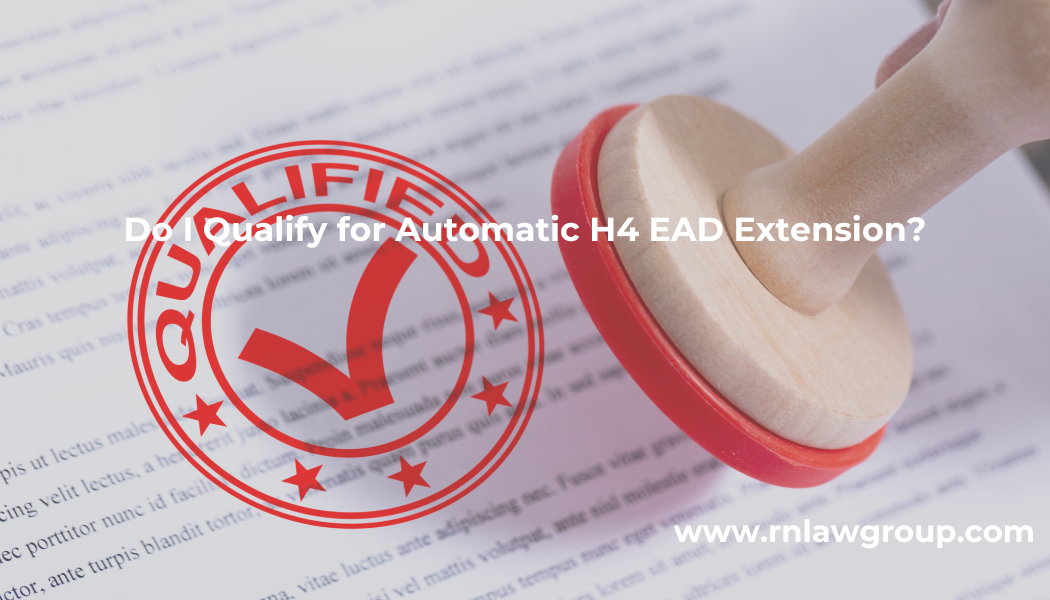
Do I Qualify for Automatic H4 EAD Extension?
The H-4 Employment Authorization Document (EAD) allows certain spouses of H-1B visa holders to work legally in the United States. Introduced to support dual-income households and reduce hardship for H-1B families, the H-4 EAD is available to spouses of H-1B workers who have reached specific milestones in the employment-based green card process—such as having an approved I-140 petition or being granted H-1B status beyond the standard six-year limit under AC21 provisions. With this work permit, eligible H-4 spouses can pursue employment in any field, start a business, or freelance, providing greater financial flexibility and career continuity.
Current USCIS Processing Times
As of mid-2025, USCIS reports that stand-alone Form I-765 applications, including H-4 EAD renewal requests, are taking approximately 6 to 12 months to process, depending on the service center and workload. For instance, applications filed through the California Service Center tend to be processed more quickly (around 5.5 months), whereas applications at the Nebraska and Texas Service Centers can take closer to 12 months. When Form I-765 is filed concurrently with a Form I-539 to extend H-4 status, the timeline can range from 3 to 6 months. These estimates cover the time from receipt of a complete I-765 to final adjudication and do not include the time required for EAD card production and delivery.
The End of Bundled Processing
Previously, USCIS generally adjudicated Forms I-129 (H-1B petition), I-539 (H-4 extension), and I-765 (H-4 EAD) together when filed at the same time. This bundling allowed H-4 dependents to receive EAD approval alongside the principal H-1B petition, offering predictability and minimizing work authorization gaps. However, this changed in March 2019, when USCIS introduced mandatory biometrics appointments for I-539 applicants, leading to a separation in processing times and a breakdown of the bundling system.
In response to litigation brought by Reddy Neumann Brown PC in Edakunni v. Mayorkas, USCIS entered into a settlement agreement in January 2023 that temporarily reinstated bundled adjudication for concurrently filed I-129, I-539, and I-765 forms. This agreement restored much-needed efficiency and predictability for many H-4 families. However, the settlement was time-limited and officially expired on January 18, 2025, returning USCIS to its prior practice of processing H-4 and EAD applications separately. With this change, the risk of delayed work authorization due to I-539 backlogs has once again become a pressing issue.
Introduction of the 540-Day Automatic Extension
To address the impact of delayed EAD renewals, USCIS introduced a temporary rule allowing for an automatic extension of up to 540 days for certain EAD categories. This rule includes H-4 spouses who file timely EAD renewals and continue to meet eligibility criteria. The rule replaced the previous 180-day automatic extension period and was intended as a stopgap measure to provide relief during unprecedented USCIS processing delays.
If you are an H-4 spouse and your EAD renewal is filed before the current card expires, and you remain in valid H-4 status, you may be eligible to continue working for up to 540 days while USCIS processes your application. The rule has helped thousands of foreign nationals avoid disruption in employment and maintain income while awaiting new work permits.
Why the Automatic Extension Isn’t Always Automatic
It’s important to understand that for H-4 spouses, the 540-day automatic extension is not triggered solely by filing a timely Form I-765. A key additional requirement is that the individual must be in valid H-4 status at the time of filing. If your underlying H-4 status has expired and your Form I-539 to extend that status is still pending, you do not qualify for the automatic EAD extension—even if the EAD renewal was filed on time.
This distinction sets the H-4 EAD category apart from others, such as adjustment of status applicants, who may automatically receive work authorization extensions without needing to maintain an independent status. For H-4 spouses, the dependence on concurrent H-4 validity makes the process more complex and increases the risk of gaps in employment eligibility.
A Travel-Based Workaround: Re-Establishing H-4 Status
For H-4 spouses facing long wait times for I-539 approval and in danger of losing work authorization, there may be a workaround. One strategy is to travel abroad and re-enter the U.S. with a valid H-4 visa, based on the principal H-1B worker’s approved petition. This can be done either by scheduling a visa stamping appointment or, in limited cases, through automatic visa revalidation (for eligible travelers returning from Canada or Mexico within 30 days).
Upon re-entry, you should receive a new I-94 record showing valid H-4 status tied to the H-1B spouse’s approved validity period. If your EAD renewal application was already timely filed, the new I-94 can be used to qualify for the 540-day automatic extension. While this travel-based approach can help restore work authorization continuity, it involves risks such as visa appointment delays, international travel restrictions, and the possibility of being denied re-entry.
Federal Court Litigation as an Alternative Path
In certain cases, H-4 spouses experiencing delays in EAD or H-4 status adjudication may consider filing a federal lawsuit under the Administrative Procedure Act (APA) to compel USCIS to act on their long-pending applications. These lawsuits, also known as mandamus actions, do not challenge USCIS’s discretion but rather ask the court to order the agency to perform a duty it is unreasonably delaying—in this case, timely adjudication of a benefit application. For some individuals who have exhausted administrative remedies and cannot afford to lose employment due to delays, litigation may offer a powerful legal avenue to break the logjam and prompt faster case resolution.
Key Takeaways and Best Practices
- Timely filing is not enough for H-4 spouses—you must also obtain extendedH-4 status to benefit from the 540-day extension.
- Delays in I-539 approval can cause significant gaps in employment eligibility.
- Travel and re-entry can restore H-4 status but should be approached carefully, with legal guidance if possible.
- Federal court litigation may be an option for applicants experiencing unreasonable delays.
- Monitor USCIS processing times and plan ahead for renewals, ideally filing 180 days before EAD expiration.
If you are unsure whether you qualify for the automatic H-4 EAD extension, consider speaking with a qualified immigration attorney to evaluate your specific timeline and documents. Staying informed and proactive is key to avoiding unintended work interruptions.
Still have questions about your H-4 EAD? Contact our office to schedule a consultation and learn more about maintaining work authorization while navigating evolving USCIS policies.
By: Emily Neumann
Emily Neumann is Managing Partner at Reddy Neumann Brown PC with 20 years of experience practicing US immigration law providing services to U.S. businesses and multinational corporations. Emily has helped transform the firm from a solo practice to Houston’s largest immigration law firm focused exclusively on U.S. employment-based immigration. She received her Bachelor’s degree in Biology from Central Michigan University and her Juris Doctorate degree from the University of Houston Law Center. Emily has been quoted in Bloomberg Law, U.S. News & World Report, Inside Higher Ed, and The Times of India on various hot topics in immigration. She is a member of the American Immigration Lawyers Association and Society for Human Resource Management.

